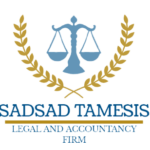
Do you know the differences between patents, copyrights, and trademarks? These terms all refer to different types of intellectual property, which can help prevent your work from being stolen by anyone else. Their best way to differentiate them is to know what each one protects.
If you’re starting your own business, it’s important to protect your branding and your product for your endeavor to succeed. But which of these do you really need, and how do they differ from the other? Here’s what you need to know about patents, copyrights, and trademarks.
What is a patent?
A patent is a property right granted to creators of new inventions or processes. These can include simple devices like mouse traps, complex machinery for factories, or pharmaceutical drugs. An invention or solution can only be patented if it is new, innovative, and industrially useful.
totoagung2 daftar cantiktoto link alternatif amintoto toto slot game slot high flyer pragmatic play toto slot login togel slot idn toto slot thailand slot gacor 4d toto macau 4d togel slot situs toto macau togel online terpercaya slot qris terbaru toto slot bandar slot daftar totoagung toto slot toto togel toto slot login slot gacor idn slot slot gacor 4d idn slot online pay4d loginWhile you can sell or use your invention without a patent, there is a risk that it will be copied by another party. Having your invention patented can prevent others from profiting off of it, either through making, using, or selling said invention. You can also grant other parties the rights to your invention, so long as both parties agree on mutual terms. Alternatively, you can sell your rights over the patented invention to another party. This relinquishes your rights on the creation and passes it onto the other party instead.
Note that there are certain inventions and solutions that cannot be patented. These include aesthetic creations, abstract ideas, discoveries and other scientific theories, methods of treatment, animal breeds or plant varieties, computer programs, and any work against public morality.
If you want your invention to be granted a patent, you’ll have to file an application to the Bureau of Patents of the Intellectual Property Office of the Philippines (IPOPHIL). Note that patent protection only lasts up to twenty (20) years from the date it was filed, and this cannot be renewed.
What is a copyright?
Copyright protects an owner’s literary, scientific, or artistic creations. Books, songs (with or without words), illustrations, photographs, cinematographic works, and computer programs are some of the many works that copyright protection covers.
If you’d like to have your work protected under copyright law, you will need to register it with the Intellectual Property Office (IPOPHIL). In the Philippines, copyright protection lasts for the entirety of the author’s lifespan, plus an additional fifty (50) years after the author’s death. Once such copyright protection expires, it enters the public domain, granting the public free access and rights to use it in any way they want.
Derivative works, which are based on works that already exist, are also protected by copyright. Creators who want to create something based on an existing piece will not be violating the original piece’s copyright protection. Examples of derivative works include adaptations, translations, or other alterations of literary or artistic works. Collections of works, such as a short story collection, are also considered derivative works.
While copyright protection covers a fast number of literary, scientific and artistic creations, there are some works that are unprotected. These include:
- Any idea, procedure, system, method or operation, concept principle, discovery or mere data as such, even if they are expressed, explained, illustrated, or embodied in a work;
- News of the day and other miscellaneous facts having the character of mere items of press information; and
- Any official text of a legislative, administrative or legal nature, as well as any official translation thereover.
In addition, no copyright shall subsist in any work of the Government of the Philippines. This is all according to the Intellectual Property Code.
What is a trademark?
A trademark identifies your brand and helps differentiate it from your competitors. A trademark can be a word, phrase, symbol, or a combination of the three. However, unorthodox trademarks exist, such as sounds, colors, and even smells. A unique trademark is a great way to help consumers remember your brand. Some well-known examples of trademarks include Nike’s check mark symbol or Pepsi’s blue and red circle.
A registered trademark prevents your competitors from using not only your trademark, but also anything similar to it. This can help you set your brand apart from the crowd. It also prevents anyone from imitating your brand to ruin its reputation or get its consumer base.
Similar to copyrights, you can file a trademark application with the Intellectual Property Office of the Philippines. Trademark protection in the Philippines only lasts ten (10) years from the date of registration, but you can also renew it every ten (10) years. A trademark can thus theoretically last forever as long as it keeps getting renewed.
Now that you know the differences between the different types of intellectual property, you can identify which ones apply to your brand so you can protect your work accordingly.

